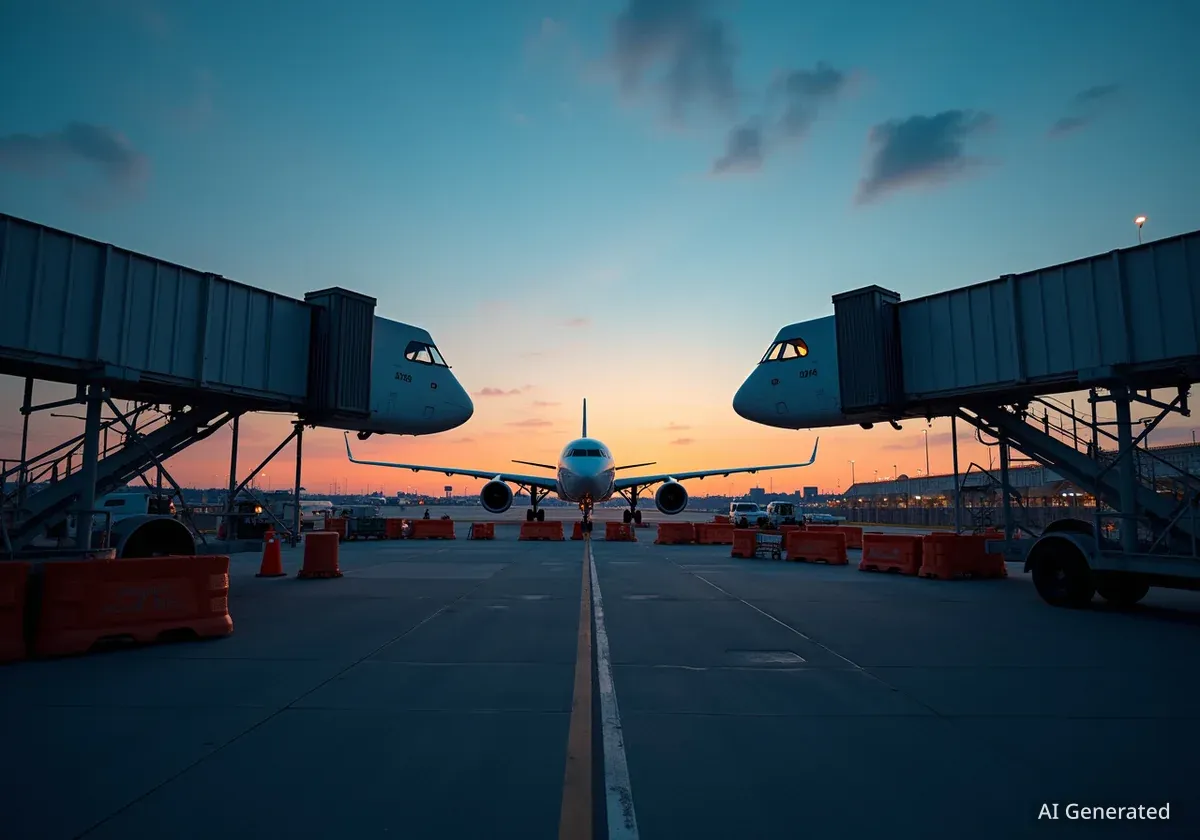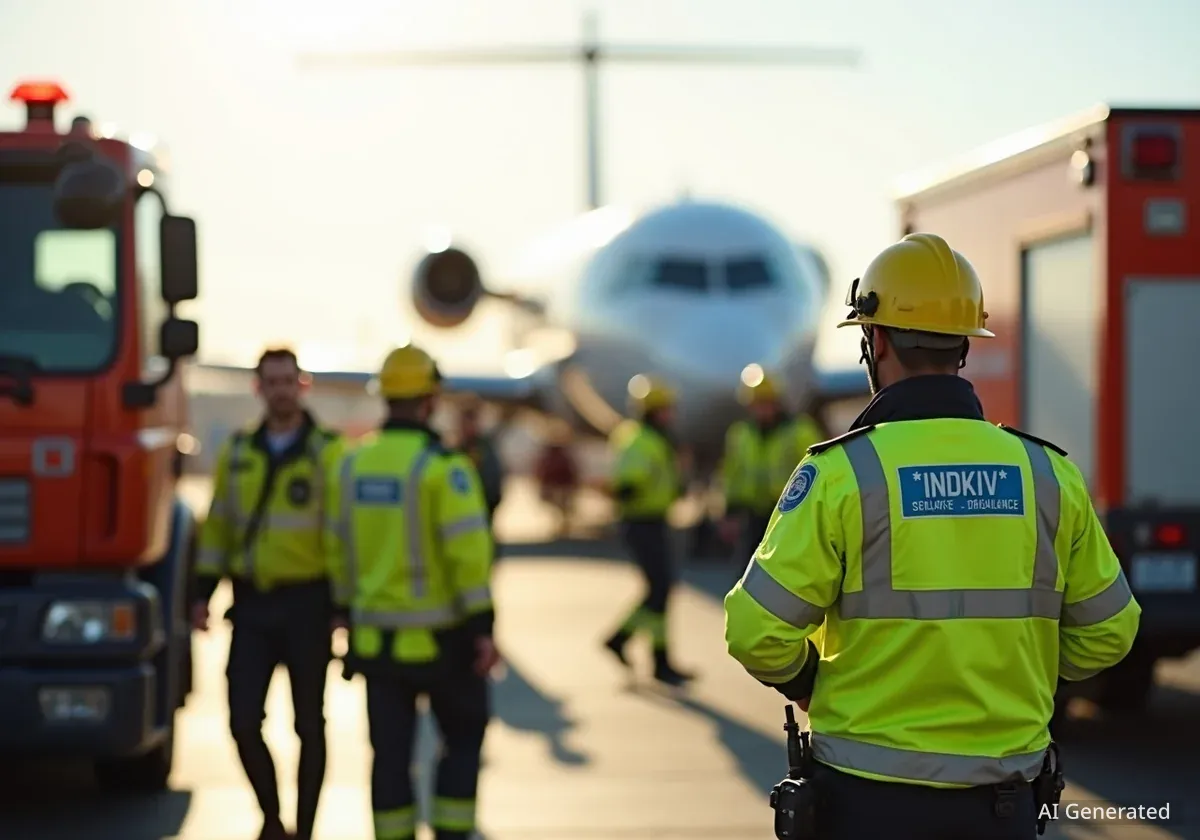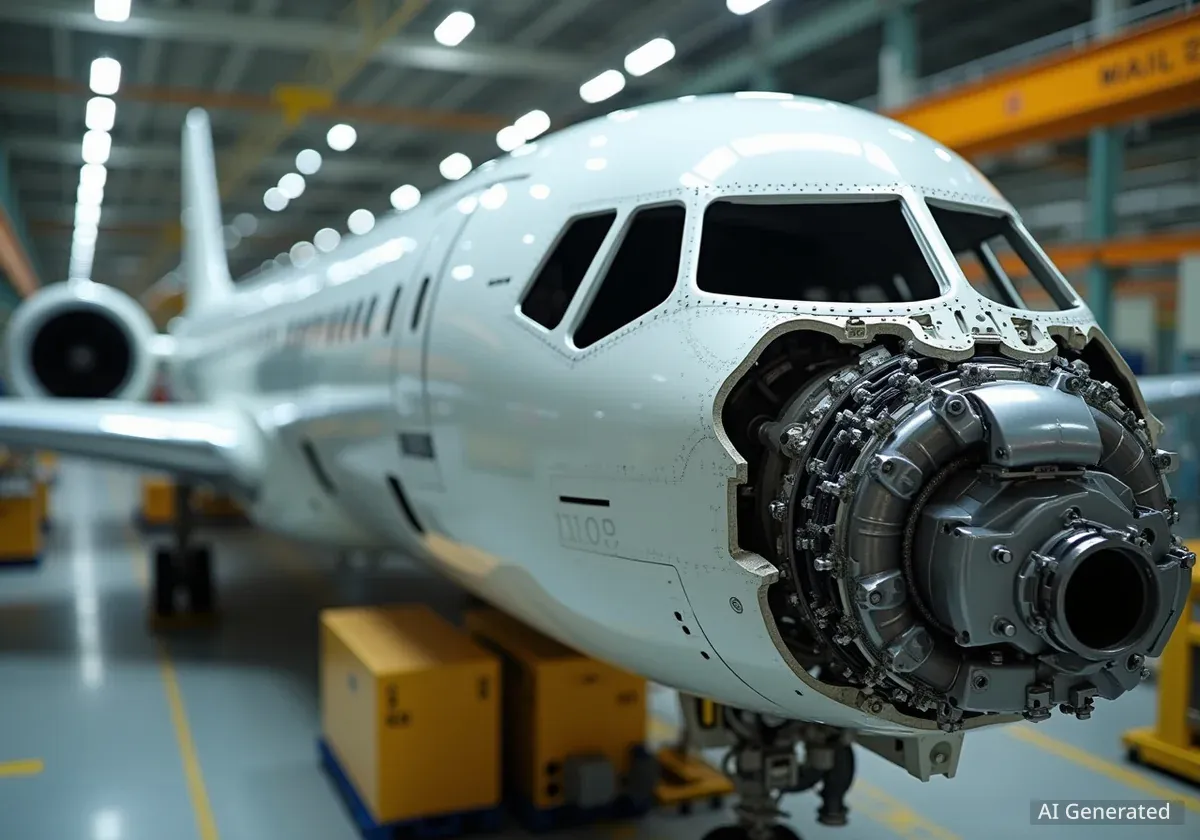Travelers flying with American Airlines, JetBlue, and Spirit Airlines at Los Angeles International Airport (LAX) will soon navigate new terminal locations. The changes are part of a massive airport-wide modernization effort, clearing the way for the demolition and complete reconstruction of Terminal 5 ahead of the 2028 Los Angeles Olympics.
The relocations, set to begin this week, will consolidate airline operations across the airport as officials prepare for the $1.4 billion project. The goal is to replace the aging Terminal 5 with a state-of-the-art facility designed to improve passenger flow and enhance the overall travel experience.
Key Takeaways
- JetBlue, Spirit, and American Airlines are moving terminals at LAX starting October 21.
- The moves are necessary for the demolition and $1.4 billion reconstruction of Terminal 5.
- The new Terminal 5 is scheduled to open in May 2028, just before the LA Olympics.
- American Airlines will be the primary beneficiary, gaining preferential use of 10 gates in the new concourse.
A Phased Relocation for Major Carriers
The operational shifts will occur in a coordinated sequence to minimize disruption for passengers. The process begins on Tuesday, October 21, when JetBlue moves its operations from Terminal 5 to Terminal 1. The airline, which averages about 20 daily departures, will now share the terminal with Southwest Airlines.
One day later, on Wednesday, October 22, Spirit Airlines will relocate its check-in counters to Terminal 2. However, its flights will operate from the newly opened Midfield Satellite Concourse South (MSC South). Passengers will need to take a shuttle bus from Terminal 2 to reach their departure gates at the new concourse.
The final major move involves American Airlines. Starting October 28, the carrier will consolidate all its LAX flights into Terminal 4 and the Tom Bradley International Terminal. This move will end its operations in Terminal 5, which will then be fully closed to prepare for demolition.
Part of a Broader LAX Transformation
The Terminal 5 overhaul is a cornerstone of a multi-billion dollar capital improvement program at LAX. Other major projects include the construction of an automated people mover train, which will connect all terminals to a new consolidated rental car facility and a Los Angeles Metro station. Officials hope to have the train operational by June 2026.
The Vision for a New Terminal 5
The plan for the new Terminal 5 is ambitious, aiming to create a modern and aesthetically pleasing space for travelers. Airport officials have described the project as a significant step forward for LAX.
"This is a really big deal. This is transformative for our guests and our employees, and it's a riveting design — it's gotta have the wow factor."
- Hans Thilenius, Deputy Executive Director of Terminal Development and Improvement, Los Angeles World Airports
Initial designs reveal a glass-walled, multi-level concourse with a midcentury modern aesthetic. One of the standout features will be an outdoor public terrace at the end of the concourse, offering a unique airport experience.
Courtney Moore, Deputy Executive Director of Strategy, Innovation, and Experience at LAWA, noted the terrace will be a unique amenity. She said it will feature "all of the telescopes you would anticipate if you were at the Griffith Observatory so you can do some planespotting and enjoy the natural landscape to the area."
Project Timeline at a Glance
- October 28: Terminal 5 fully closes.
- Next 3 Months: Demolition of the existing structure.
- Following 2 Years: Construction of the new terminal.
- May 2028: Targeted opening for the new 15-gate concourse.
Impact on Airlines and Passengers
While the construction will cause short-term changes, the long-term benefits are expected to be substantial, particularly for American Airlines. The carrier is set to become the primary tenant of the new facility.
A Big Win for American Airlines
American Airlines stands to gain the most from the new terminal. According to documents from Los Angeles World Airports (LAWA), the airline will have preferential use of 10 of the new concourse's 15 gates. This is a significant increase from the five gates it currently uses in Terminal 5.
Furthermore, the project is expected to streamline connections for American's passengers. The airline will likely cease operations at its remote regional terminal, known as the "Eagle's Nest." Eliminating the need for bus transfers to this facility will create a more seamless and efficient connection process within the main terminal complex.
Navigating the Changes
For the next few years, passengers of the affected airlines should double-check their terminal information before heading to LAX. The move of Spirit flights to the MSC South, accessible only by bus from Terminal 2, is a notable change that requires extra travel time.
The current Terminal 5, which first opened in its present form in 1988, has long been criticized for its outdated design. Aviation experts have pointed out its inefficient layout, with a sunken food court and cramped gate areas that offer little space for waiting passengers. The new design is expected to be far more functional, with better connections to the adjacent Terminals 4 and 6.
Racing Against the Olympic Clock
The timeline for the Terminal 5 project is tight, with the opening scheduled just two months before the Olympic Games begin in Los Angeles on July 14, 2028. While officials are confident, they have also prepared contingency plans.
LAWA CEO John Ackerman addressed the timeline during a recent board meeting. He stated that the airport has sufficient capacity to handle Olympic crowds even without the new terminal fully operational. "Our minimum plan is we do the [Terminal 5] headhouse and, kind of, the front five gates and then be buttoned up so it presents a beautiful, excellent experience for the Olympics," Ackerman explained.
This flexible approach gives LAWA until the second quarter of 2027 to decide whether to debut a fully completed 15-gate concourse or a partially finished but functional terminal for the global event. Either way, the transformation of LAX continues, promising a vastly improved airport for the millions who travel through it each year.





